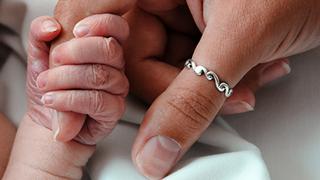
Even though the burden of SIDS is declining, it remains a leading cause of infant mortality globally. Image used for representational purposes only
| Photo Credit: Getty Images/iStockphoto
October is marked as Sudden Infant Death Syndrome (SIDS) month. Here is all you need to know about the condition.
What is SIDS?
Sudden Infant Death Syndrome is the term used to describe the sudden and unexpected death of an infant that is less than one year old, for which no cause can be found even after an investigation. It is sometimes known as ‘cot death’ or ‘crib death’, even though cots and cribs are not the cause of these deaths.
SIDS is a leading cause of infant mortality globally. However, the burden of SIDS has been consistently declining over the decades, albeit with significant regional differences. A research paper published in Frontiers in Pediatrics in June 2025 that analysed data from the Global Burden of Disease (GBD) 2021 study stated that in 2021, global SIDS deaths totaled 30,608, with a mortality rate of 24.16 per 100,000 infants. Mortality rates decreased by 59% from 1990 to 2021, with marked regional differences. “Regions with Low SDI [socio-demographic index] and Minimal health systems, particularly Sub-Saharan Africa, had the highest burden, while higher SDI and advanced health system regions reported significant declines,” it said. Male infants aged 1–5 months showed higher rates than females.
While most SIDS deaths occur during the first six months of a baby’s life, SIDS can affect babies up to 12 months of age. It occurs slightly more in baby boys. Generally, SIDS happens when the baby is asleep.
Risk factors for SIDS
Risk factors include: premature birth or low birth weight; a family history as babies who have had a sibling who died of SIDS are at a higher risk; exposure to smoking/secondhand smoke during or after pregnancy; alcohol use during pregnancy; overheating, unsafe sleeping positions or environments and poor prenatal care. Babies are at a high risk between the ages of two and four months.
Possible causes
As the name indicates, SIDS is an unexplained death. However, researchers have studied SIDS and believe that it may be caused by a combination of some factors.
Researchers believe babies who die of SIDS may have an underlying vulnerability: this may be a problem with or the under-development of the part of the brain that helps controls breathing and waking during sleep. It may also be a genetic vulnerability or a vulnerability to environmental stresses.
Vaccines do not cause SIDS.
Sleep and SIDS
While SIDS cannot be fully prevented, safe sleeping practices can go a long way towards reducing risk. According to the Unicef these include:
Following the ABCs of safe sleep: Always place the baby to sleep on their back in a clear sleep space free of any objects such as bumpers, toys, pillows and loose bedding. Sleeping with a baby on a couch or chair is always unsafe because cushions, unsafe sleep positions, etc. can obstruct the baby’s airways and lead to suffocation.
Keep them comfortable: Keep your baby from getting too hot or too cold by dressing them in bedclothes that are seasonally appropriate for where you live.
Sleep near your baby for at least the first six months: Your baby should have their own, separate sleep space, but having you nearby helps reduce their risk of SIDS.
Keep their sleep environment smoke-free: This is an important step to keep an infant safe.
Sleeping on soft surfaces can block an infant’s airway; the surface should be firm and flat. Stuffed toys, cushions, pillows can be suffocating hazards. Sleeping on the stomach and side may lead to babies having trouble breathing and the baby may not be able to lift their head. The “feet to foot” position: ensuring the baby’s feet touch the end of the cot or pram and tucking the blanket in securely, so that it does not move or cover their head, is recommended.
Other preventive measures
Breastfeeding babies may help lower the risk of SIDS. Getting babies vaccinated on time is another important measure. Experts also discourage the use of commercial devices that are marketed claiming to reduce the risk of SIDS. Give the baby enough “tummy time” while they are awake.
Support and policy
Losing a baby to SIDS can be traumatic. Getting emotional support and/or professional help is critical.
The Frontiers in Pediatrics research paper also notes that while the global SIDS burden has consistently declined since 1990, including during COVID-19, significant regional disparities remain. “Enhanced healthcare interventions and targeted public health initiatives are crucial, particularly in regions with Low SDI and Minimal health system resources,” it states.
Published – October 14, 2025 07:31 pm IST















Leave a Reply